Camping With Cats: 12 Tips & Tricks
By Lorre Luther
Updated on
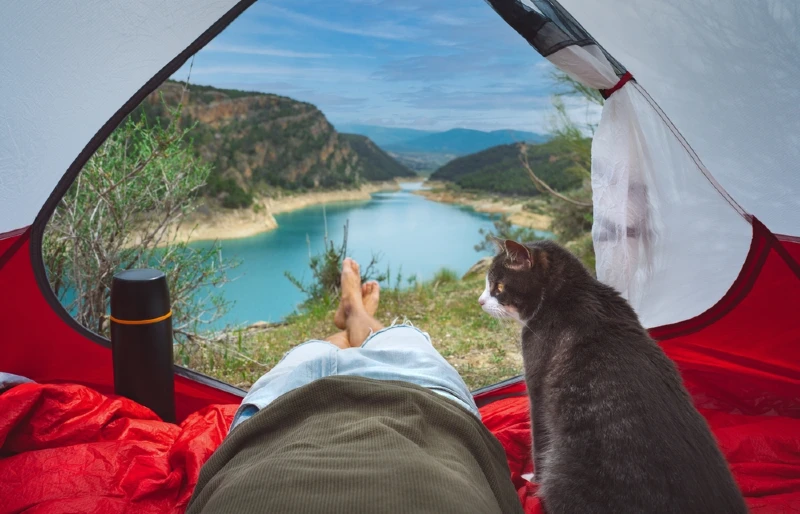
Since so many people love camping with dogs, you may wonder if bringing your feline companion along when exploring the great outdoors is possible. It depends entirely on the cat! Some cats do just fine camping with their people, and others simply prefer the comforts of home. If you have an adventurous cat, with the right preparation, they may enjoy a night or two of camping. Keep reading more information about camping with cats.
Before You Start
Not all cats are interested in or temperamentally suited for camping. Some don’t enjoy new environments and situations. If your cat loves nothing more than napping in the window, they may not enjoy spending time in the great outdoors. Cats that become stressed from environmental changes may not react well to hitting the road. Also, some pets that dislike car rides probably won’t be great camping partner candidates due to the stress caused by driving to far-away campsites.
Cats that regularly accompany their humans on walks and other activities can often safely go camping as long as they are comfortable wearing a harness and leash. Cats must be leashed and harnessed at all times while camping, so give your pet lots of time to adjust to their harness at home under familiar conditions. Consider setting up your tent and putting out your gear at home to allow your cat to become used to it.
Before heading out, ensure your cat is microchipped and verify that your contact information is current and updated with the proper pet registry. Attach an ID tag with your contact information directly to your pet’s harness to make it easy to find you in case your buddy gets lost while you’re away from home. A GPS tracker can make it easy to find your pet if they manage to run off and get lost. Ensure your cat’s vaccinations are current before heading out, and speak with your veterinarian about the best way to protect your pet against fleas and other parasites your buddy may encounter while camping.

The 12 Tips & Tricks for Camping With Cats
1. Check Out the Campsite
Contact the campsite directly to make sure it’s cat friendly. Pet-friendly establishments sometimes only accept canine guests, so make sure cats are welcome before making a reservation. Consider opting for a campsite that takes reservations to ensure you have a place once you arrive. Double-check the pet regulations that apply to any state or national parks you plan to visit with your cat. Pets aren’t permitted in wilderness areas in some national parks.
2. Think About the Weather
Plan your expedition for a time of year when temperatures will be most comfortable for your cat. Avoid taking your pet camping during extremely cold or hot times of the year. While cats are usually quite comfortable in the heat, a couch potato indoor kitty may be unable to adjust to camping outdoors in the heat of a high desert summer, particularly in areas with little shade.
Locations with relatively high temperatures and humidity can also be difficult for cats due to their fur and limited ability to cool off by sweating. If you need any special cold weather gear, it’s likely too cold for your cat to go camping.

3. Pack Enough Food
Make sure to pack enough food and water to keep your cat happy for the trip. Add a few treats as well. Plan on feeding your cat their regular food while you’re on the road to minimize the environmental changes your buddy has to deal with all at once. If your cat has dry food in the morning and wet food for dinner, stick with that pattern. Ensure you have a plan for opening and storing wet food fresh. Single-serving wet food options can make it easy to feed cats while camping.
4. Have a Plan for Water
Staying hydrated while camping is essential for people and cats. If you’re staying at a campsite with a water source, there’s likely nothing to worry about when refreshing your cat’s water. Because some campsites don’t have drinking water available, ensure you have enough in your car to meet your cat’s needs.
Cats need about ½ cup of water for every 5 pounds; a 10-pound cat requires at least 1 cup of water per day. Take enough water with you for your cat to make it through at least a few days, just in case there’s a problem with the water at the campsite.
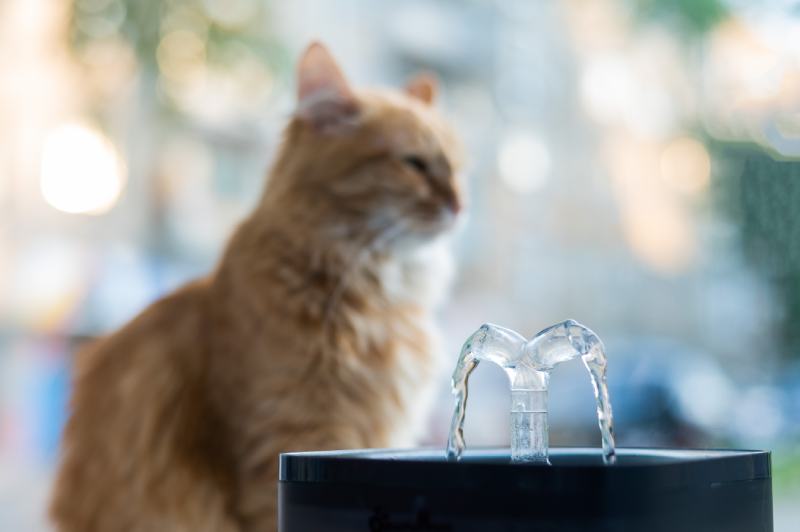
5. Figure Out the Litter Situation
Some cats that spend a fair amount of time outdoors may be comfortable going to the bathroom without a litter box. But cats who usually stick with litter boxes may feel more comfortable using a portable box. Biodegradable disposable products provide convenience in relatively earth-friendly packages. But you can always opt for a compact portable option if you plan to travel regularly with your cat. Given the chance, some cats naturally start going to the bathroom outside.
6. Avoid Busy Times and Locations
Heading for a quiet campsite during an off-peak period can go a long way toward keeping things as calm as possible for your cat. While some cats are fine around strange people and aren’t bothered by noises, other pets can’t relax in busy environments. Cats may not enjoy campsites with lots of activities and action. Spring break might not be the best time to try out that new campsite on South Padre Island, as constant stimulation often stresses kitties.

7. Have a Dog Plan
If you’re heading to a pet-friendly campsite, chances are pretty high that you’ll run into a dog or two during your trip. Have a plan in mind so you know what to do when dogs appear. Most campsites require dogs to be leashed, but accidents happen, and dogs always slip out of tents and outrun their humans. Consider taking your cat on a few walks before going camping so they can become more comfortable seeing and interacting with strange dogs (and people).
8. Start Slowly
Cats are incredibly adaptable creatures; most prefer a bit of time to accustom themselves to the latest human-initiated nonsense being forced upon them. Allowing cats to adapt to new situations and environments generally keeps them from becoming stressed out, which in turn, makes them less likely to resist new activities.
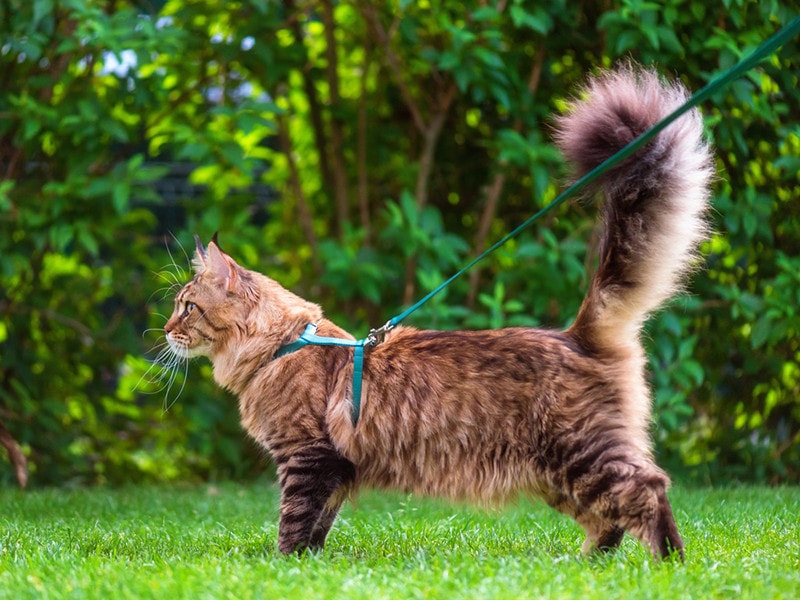
9. Have a Sleeping Plan
Sleeping in a tent with a cat requires planning, as kitties can easily slip out of unzipped tent flaps. You can allow your cat to move freely inside the tent or put your buddy in a carrier at night, which may work well for cats that enjoy hanging out in their carriers. Practice getting your cat into their carrier in the tent before heading out for a night under the stars.
10. Be Your Pet’s Safe Retreat
Scared or anxious cats often try to get away from whatever is bothering them. Providing cats with a safe space to retreat and calm down is a critical stress management strategy. But it’s often challenging to implement the same techniques that work at home when you’re camping. Evaluate your situation and have a plan in mind so you don’t have to problem-solve in the face of a terrified cat.
Cars and carriers can provide temporary safe areas for cats, but remember that pets should never be left unattended in either. Be prepared to step in and remove your cat from any situation that becomes scary well before things start going downhill.
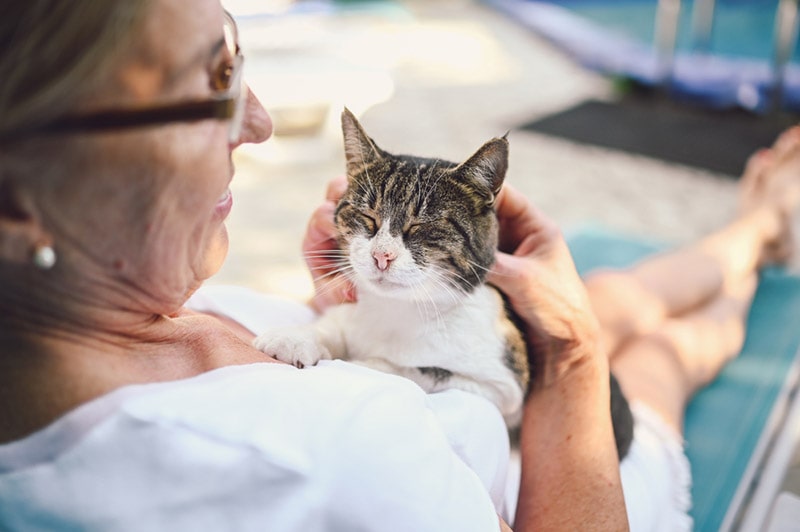
11. Invest in a Playpen
Consider buying or borrowing a playpen for your cat to enjoy while you’re on the road. Most feature secure zippered closures and breathable mesh so your buddy can safely enjoy the view. Cats in playpens still need to be supervised, and you can get a cat backpack if you plan to explore the trails, as kitties should never be left alone at campsites or in tents. Set up the playpen at home and give your cat time to warm up to the enclosure.
12. Be Prepared to Call It Quits
Camping with cats can be fun, but be prepared to head home if your pet just isn’t enjoying the experience. If your cat starts showing signs of stress, such as refusal to eat, lack of interest in interacting, withdrawing, or being testy, you may want to cut your trip short. Your cat may need more time to adjust to things before they can enjoy a serious camping trip. Or you may have a feline that simply isn’t into camping. Either way, follow your cat’s lead and consider ending the trip if things aren’t going well.
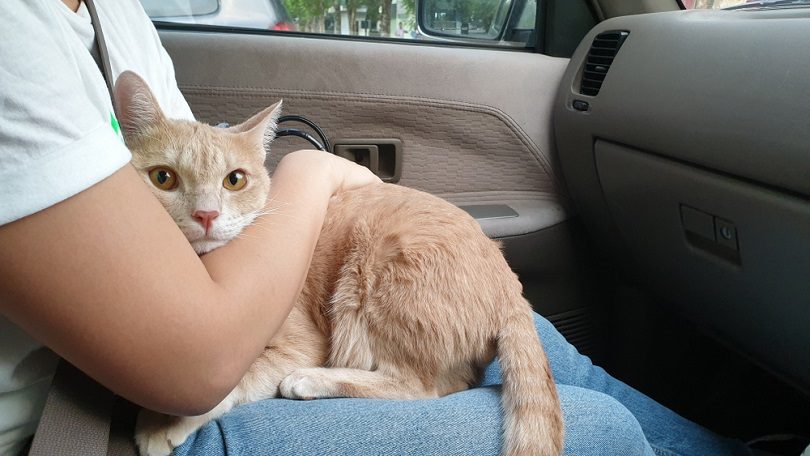
Conclusion
Camping with cats is possible but requires a bit more effort than hitting the great outdoors with dogs. Remember that not all cats enjoy exploring new places and meeting new people. Homebody cats may prefer to enjoy a nice weekend on the couch, but cats that like adventure and can tolerate a harness and leash may enjoy camping. Start by giving your cat lots of time at home to sniff and smell your gear and tent. Consider setting up the tent at home to make your cat comfortable with it. You can take a short trip close to home and build up to longer trips over time if your cat enjoys the outings.
Featured Image Credit: Creative Cat Studio, Shutterstock












